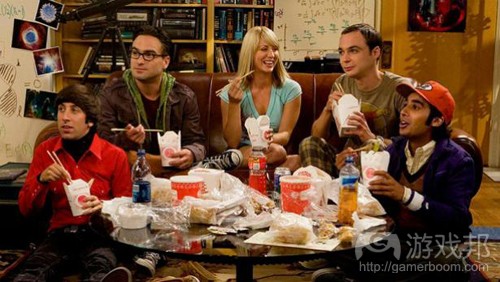游戏可借鉴电影和电视制作经验优化产品
作者:Graham McAllister
当我们在玩游戏时可能遇到过这种情况并常自问:“开发者到底是怎么想的?这种游戏有什么好玩的?”通常情况下,游戏并不是为你量身定做的,它也不是面向任何人的专属内容,开发者在游戏制作阶段并没有与目标用户达成共鸣。
最常见的原因是很多开发者并不清楚谁将玩自己的游戏。实际上,每个工作室都会猜测玩家可能喜欢的内容并以此去制作游戏,但多半都是在传达开发者自己的想法。
这也许是源于游戏产业的固有传统,即开发者一个人独自躲在卧室中开发游戏,并且只是制作自己想玩游戏。即使是现在的一些大型团队也同样如此,总是由工作室中的几个人去做出关键决定。但是他们的观点是否真的比其他人更加有效呢?
当然,我们都拥有经验,但是当提到设计一款成功的游戏时,我们真正需要的并不是观点,而是能够表明某一设计是否出色的证据。想出一个游戏理念固然是好事,但是你想提高游戏成功的可能性,你最好在发行前先对设计进行评估。这种创造性评估同样也会出现在其它娱乐产业中,但是不知怎么的,电子游戏却始终未把握其中要领。
电影
从1928年起,电影产业便通过试映方式去评估用户对于即将发行的电影的反应。制片人通过选定一些具有代表性的观众,并在他们面前播放完整的电影内容和可替换的结局。当出现片尾字幕时,观众便需要填问卷调查表,负责人也许会挑选一些观众进行面谈,或者导演将根据观众观看电影时的监测视频观察他们在不同时刻的反应。
这一过程是否能完善观众的电影体验?这一点毋庸置疑。许多电影通过改变演员,调整故事,为观众创造反应空间,创造紧张感或平衡用户关注水平等方法而得到完善。像《大白鲨》,《僵尸也疯狂》以及《惊变28天》等电影便是通过试映进行完善。《憨豆特工》的制作人便是通过试映而明确了主角出场的方式,所以他们重新设置了电影的开始阶段以解决这一问题,并有效地提高了测试分数。
通常情况下当导演基于试映结果再次编辑时,他们会惊讶地发现自己之前的编辑有多糟糕。即使是最老练的导演也承认自己的作品需要经过验证:Woody Allen(游戏邦注:美国电影导演,编辑,演员,喜剧演员,作家,音乐家与剧作家)便表示自己能够很轻松地写出一部剧本,但是只有在了解了观众对剧本的反应后他才清楚剧本的可行性。就像我之前所提到的,我们不能亲自验证自己的错误,不管是在电影产业中还是电子游戏开发领域。
电视
电视产业进一步实践了创造性评估过程,即在实时录像过程中进行喜剧材料的实时测试。我听说华纳兄弟的《生活大爆炸》便是使用这种方法去创造最佳结果。即在录制了一段场景后导演会对观众说演员将重新表演一次某个场景——假装演员的表演不符合自己的要求。
但是事实上演员只是想以此尝试不同的笑话。这种情景将多次出现,而观众笑得最大声的那次表演便会成为最终的喜剧片段。当电视播出时,观众会认为他们在观看一部精心制作的节目,但是事实上却并非如此。他们所观看到的都是录制当天观众反响最热烈的表演。正因为观众的反馈,最后播出的内容才能得到了最大的优化。
游戏?
不管是电影和电视娱乐产业都是出于相同理由去评估自己的内容:给自己最大的机遇而创造出最棒的体验。他们都承认并不敢保证自己的作品能否获得别人的喜欢,所以他们便让观众参与制作过程中而尽可能缩小犯错的风险。
所以其它产业也可以以此为经验,将目标用户整合到创造过程中帮助自己更好地评估产品。在游戏产业中,如果开发者准备好接纳测试用户,便能为自己的游戏迎来更多且更好的机遇。(本文为游戏邦/gamerboom.com编译,拒绝任何不保留版权的转载,如需转载请联系:游戏邦)
What games can learn from Hollywood and TV
Graham McAllister
We’ve all played a game at one point and asked ourselves, “What were the developers thinking? What’s meant to be enjoyable about this?” Often, a game just isn’t for you, but sometimes, it simply isn’t for anyone, and ideas which sounded fine to the developer during production just don’t resonate with the game’s target audience.
One of most common causes of this is that many developers simply have no idea who is going to be playing their game. In fact, it’s common for games to be made based on what studios think players will enjoy – based, more often than not, on the developers’ own tastes.
Perhaps this stems from the origins of our industry, with games being developed in bedrooms by one person, making a game because they themselves want to play it. Even with the larger teams that we have today, it’s often the case that key decisions are being made by only a select few in the studio. Is their opinion really any more valid than anyone else’s?
And opinion is all it is, most of the time. Sure, we all have experience, but when it comes to designing successful games, what’s really needed is not opinion, but evidence that the design is sound. It’s all very well coming up with a game concept, but if you want to increase the likelihood of success then evaluating designs before release would seem like an intelligent approach. This evaluation of creative content is precisely what happens in the other entertainment industries, yet somehow, videogames have been slow to embrace these methods.
Movies
The movie industry has been evaluating what audiences think about upcoming releases using test screenings since 1928. A representative audience is recruited, and screenings of the full movie and alternate endings are shown. After the credits have rolled, questionnaires may be filled out, audience members may be selected for interview or the director may review video recordings of the audience to watch their reactions at key moments.
Does this process improve the movie experience? Undoubtedly. Many movies have been improved by changing actors, tweaking narrative, creating space for the audience to react, building tension, or balancing engagement levels. Movies such as Jaws, Shaun of the Dead, and 28 Days Later were all improved by test screenings. During screen tests of Johnny English, problems were identified with the introduction of the main character. The beginning of the film was re-shot with a focus on addressing this issue and the resulting test scores increased considerably.
It’s also often the case that once a director has made an edit based on results of a test screening, they are often surprised at how badly they made the original edit in the first place. Even experienced directors admit that their creative output needs validation: Woody Allen says that it’s easy for him to write a script, but he’s no idea if it’s any good until he sees an audience’s reaction. This inability to see our own mistakes is something I’ve mentioned before, and it’s as true for videogame development as it is for the movie industry.
TV
The TV industry takes the creative evaluation process one step further and performs realtime testing of comedy material during live recording. During a recent tour of the Warner Bros studios, I was told how they record Big Bang Theory to ensure the best possible outcome. After a particular take, the director may say to the audience that the cast are going to try that scene one more time, pretending that he didn’t get the shot he wanted.
What’s really happening, however, is that the actors are going to try out a different joke. This could happen multiple times and the joke with the biggest laugh will be the one which makes the final cut. When aired, the viewer thinks they’re watching one carefully crafted show, they’re not. What they’re experiencing is the best possible permutation of jokes as rated by the test audience on that day of recording. The episode that ultimately airs has been optimised thanks to audience feedback.
Games?
Both the movie and TV entertainment industries evaluate their content for the same reason: to give themselves the best possible chance of creating a great experience. They openly admit that they’re not sure if their creations will be enjoyed by others, so they put processes in place to minimise the massive risks of getting it wrong.
What these other industries have learned from experience is that involving their target audience in evaluation produces better results than if they ignore them. For our industry, then, opportunities for both better and more original games exist if studios are prepared to embrace them. But are their arms – and minds – open?(source:edge-online)
上一篇:阐述重玩性对游戏的意义和价值









































